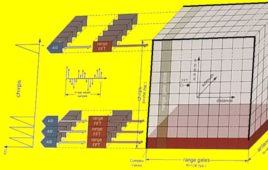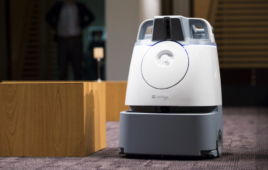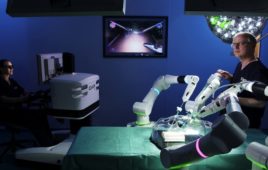Researchers at North Carolina State University have developed a biologically inspired structure that has characteristics of both computers and robots but is not quite either. The technology can sense, compute, and respond without any centralized processing. The researchers noted that the “soft tactile logic” could be useful for a variety of applications, including soft robotics and prosthetic devices.
“We call this ‘soft tactile logic’ and have developed a series of prototypes demonstrating its ability to make decisions at the material level — where the sensor is receiving input — rather than relying on a centralized, semiconductor-based logic system,” said Michael Dickey, co-corresponding author of a paper on the work and Alcoa Professor of Chemical and Biomolecular Engineering at North Carolina State University.
“Our approach was inspired by octopuses, which have a centralized brain, but also have significant neuronal structures throughout their arms,” he added. “This raises the possibility that the arms can ‘make decisions’ based on sensory input, without direct instruction from the brain.”
Stretchable materials key to soft tactile logic
At the core of the soft tactile logic prototypes is a common structure. The researchers took pigments that change color at different temperatures and mixed them into a soft, stretchable silicone form. That pigmented silicone contained channels that are filled with metal that is liquid at room temperature, effectively creating a squishy wire nervous system.
Pressing or stretching the silicone deformed the liquid metal, increasing its electrical resistance and raising its temperature as current passed through it. The higher temperature triggered a color change in the surrounding temperature-sensitive dyes. In other words, the overall structure has a tunable means of sensing touch and strain.
The researchers also developed soft tactile logic prototypes in which this same action — deforming the liquid metal by touch — redistributing electrical energy to other parts of the network. This caused the material to change colors, activate motors or turn on lights. Touching the silicone in one spot created a different response than touching in two spots. In this way, the system carried out simple logic in response to touch.
“This is a proof of concept that demonstrates a new way of thinking about how we can engineer decision-making into soft materials,” Dickey said. “There are living organisms that can make decisions without relying on a rigid centralized processor. Mimicking that paradigm, we’ve shown materials-based, distributed logic using entirely soft materials.”
Building toward complexity
The researchers are currently exploring ways to make more complex soft circuits, inspired by the sophisticated sensors and actuators found in biological systems.
The paper, “Materials tactile logic via innervated soft thermochromic elastomers,” is published in the journal Nature Communications.
First author of the paper is Yang Jin, a former visiting scholar at NC State and former Ph.D. student at Jiangnan University. Co-corresponding author of the paper is Mingqiao Ge of Jiangnan University. The paper was co-authored by Yiliang Lin and Ishan Joshipura, former Ph.D. students at NC State; and Abolfazi Kiani, a visiting professor at NC State who is also on faculty at the University of Isfahan.

The Robot Report is launching the Healthcare Robotics Engineering Forum, which will be on Dec. 9-10 in Santa Clara, Calif. The conference and expo will focus on improving the design, development and manufacture of next-generation healthcare robots. Learn more about the Healthcare Robotics Engineering Forum, and registration will be open soon.
Filed Under: The Robot Report, Student programs





Tell Us What You Think!